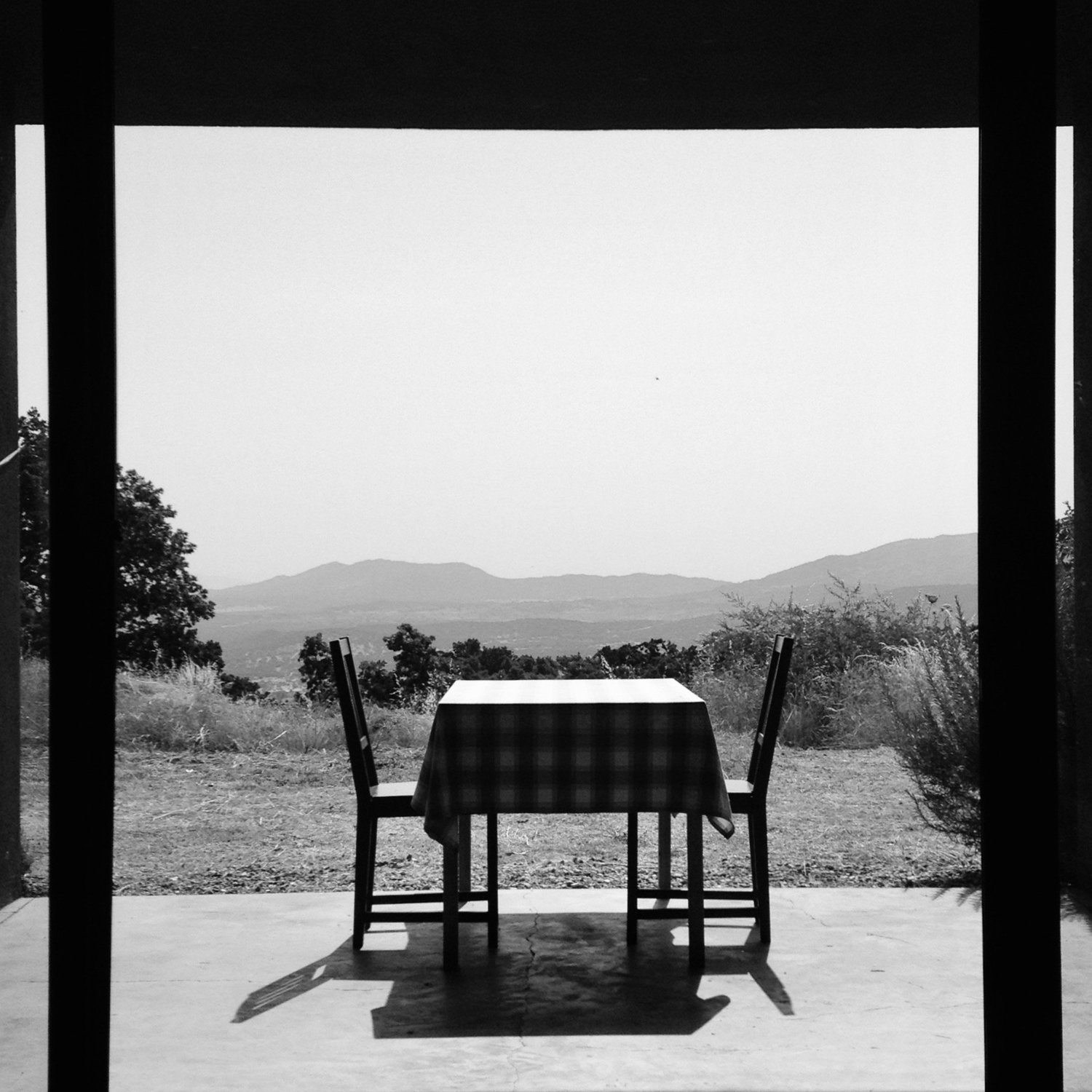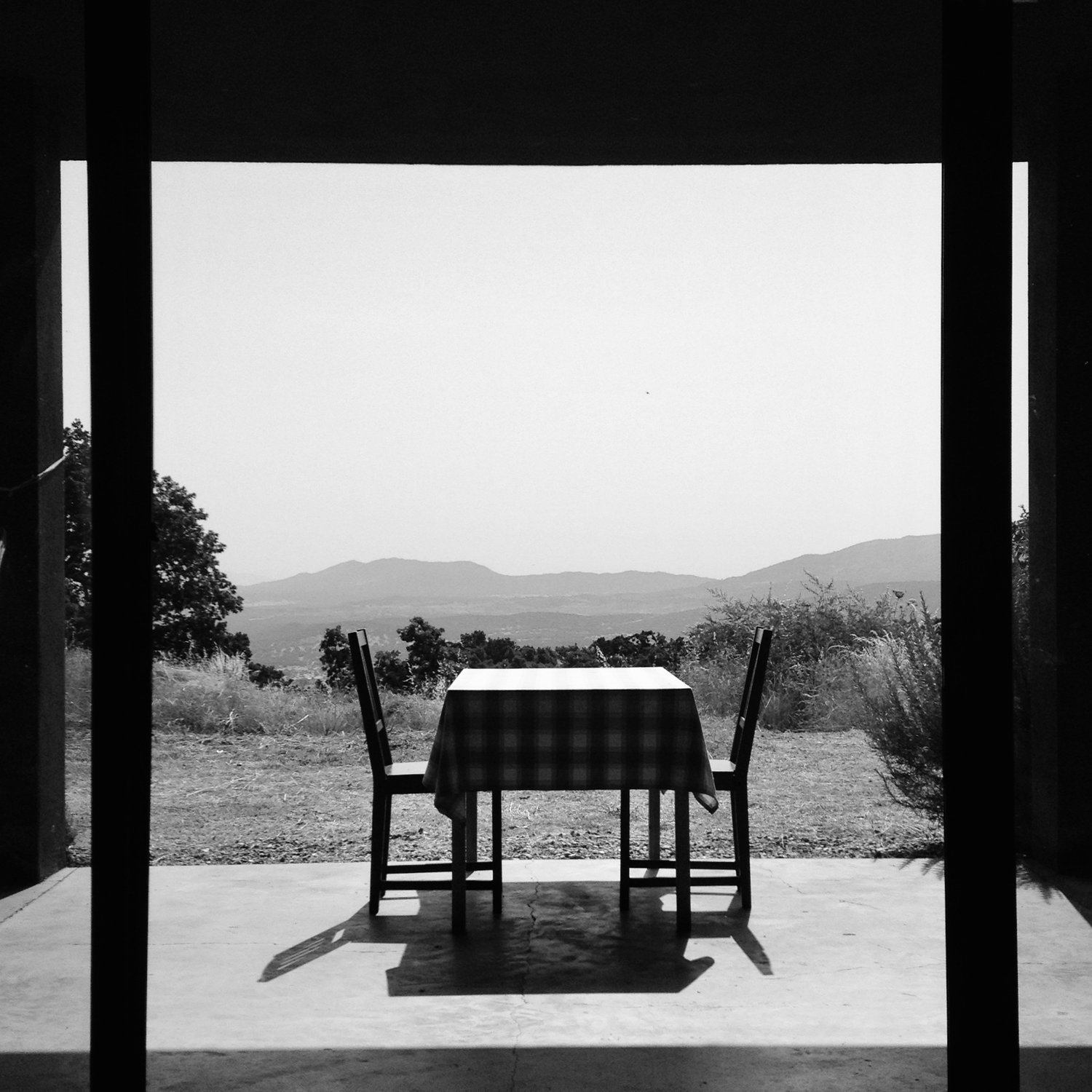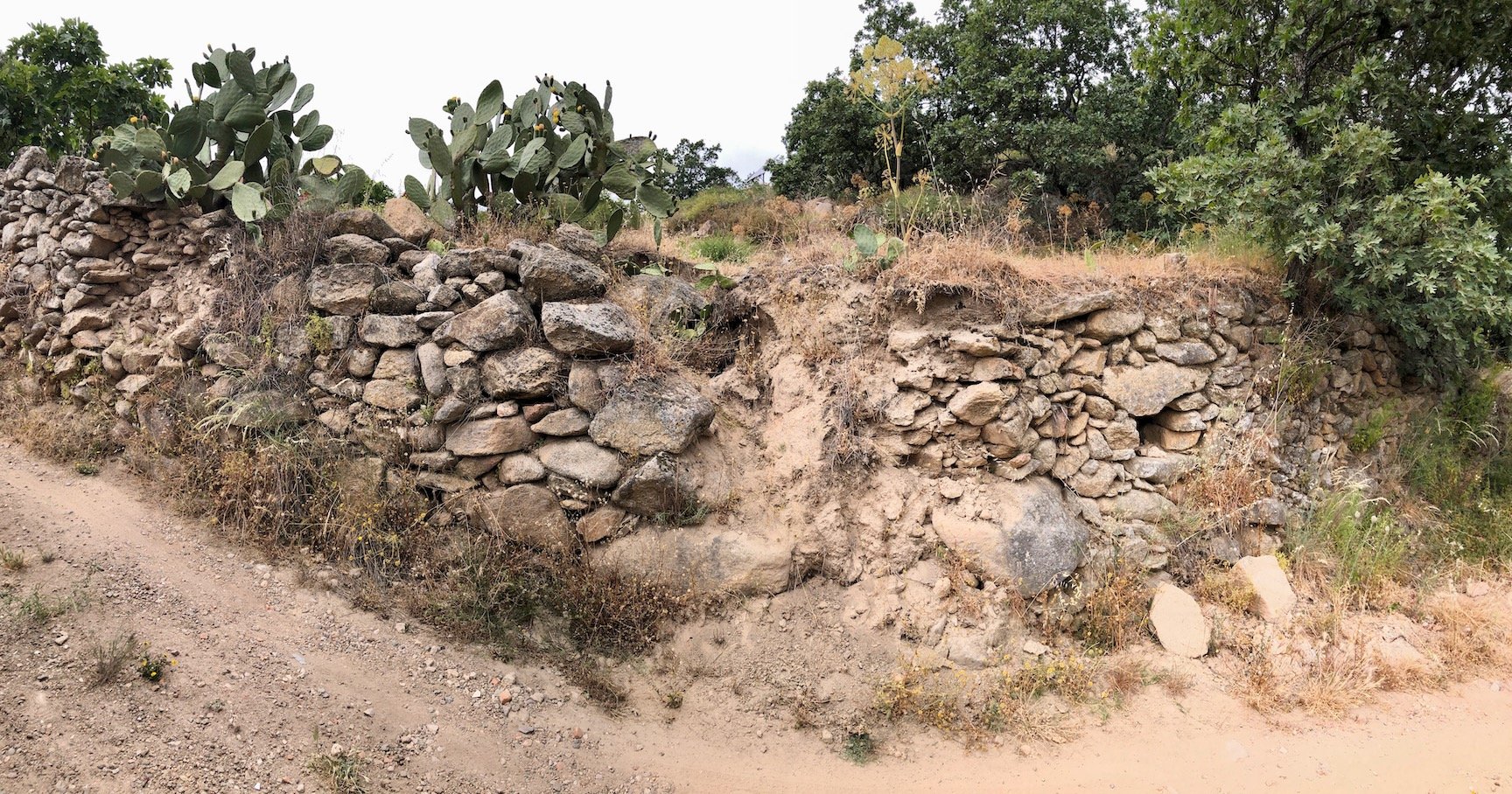Walls (2023)
It is six years since I rebuilt that first wall (see Walls 2016). This year, as we had been warned before our arrival in May, the December floods had taken their toll. The camino below us had been washed away, an unstable embankment dissolved by rain, fetching up downhill against a dry stone wall holding up an embankment sloping down from the opposite direction. Joop, our neighbour, had sent us some photos of the deluge, of pathways turned into raging rivers contained between stone walls, and even the open roadway into the village defined only by torrents on either side. Later he told us that he could see waterfalls tumbling down the terraces, olive groves awash with the inundation. This all happened in mid-December with "La Borrasca Efraín". Our washed out camino was a scaled down version of the giant sinkhole created in the N-523 between Caceres and Badajoz. The Spanish (and Europeans) measure their rainfall in liters per square meter. In Caceres over the course of the downpour they received 73 liters per square meter, just short of 3 inches. In the United States rainfall of that volume is sometimes referred to as a gullywasher.
Which brings us to the task in hand. Towards the bottom of our front field there is an open gully that drains surface water from the high ground diverting it through an opening in the retaining wall that rises about two-and-a-half meters above the camino. As well designed and as robust as this stone lined ditch had been over the years, clearly Efraín was more than a match. Some years ago I had planted prickly pears along the edge, but the root system is horizontal, not deep, insufficient in holding back the sodden ground. Stones fell down into the camino leaving a big gash in the ground above.
Before
I contemplate the task of rebuilding, all the time feeling that I am six years older than I was rebuilding that other wall on the west side of the finca. To make matters worse I am working from below, and the stones in a retaining wall are bigger than those in a regular field wall. Giving the major stones that have fallen a test heave, I reckon they range from about 56 to perhaps 112 pounds. These calculations are calibrated from muscle memory heaving half-hundred weight and full hundred weight sacks of corn and animal feed up into the loft above the long byre on the farm. Ancient units, I know.
As a matter of interest, I have checked to see what is involved in weightlifting above one's head. Online advice includes warmups; having a solid footing with feet hip-width apart; taking firm grip of the weights with a 90-degree bend at the elbow; and so on. Warmups I can do but the other instructions bear as much relation to the reality of lifting irregular, rounded, massive stones on a dusty, slippery slope as Voltaire's Candide does to actually cultivating a garden. I am not going to do this by myself and I really do not want to rent a tractor with a fork lift.
Today, recalling lessons in elementary structural engineering, I reduced the height of the retaining wall until I got down to some really big, heavy ones (good vertical load) that would not shift for anyone. And with huge effort I have actually managed to heave some of the lighter (half-hundredweight, 25-kilo) stones into reasonably stable positions. A couple of the bigger ones remain at the base of the wall, out of the way of any vehicle that may come by. In the process I also reduced the "angle of repose" as the engineers call it, by raking back the earth that had piled up behind the retaining wall. For the moment I have planted cactus fronds hoping that the shallow lateral root system will hold the loose earth in place. I have left enough space to plant a tree with deeper roots to give more profound stability to the embankment for the longer term. Nancy suggests a morera, a mulberry tree, the symbol of Montánchez.
After (deep root tree to be added)
It is late May. Rain clouds are forming in the east and the wind is, abnormally, coming from the south-east. This morning I heard, but did not see, a golden oriole, singing, in the words of my Spanish bird guidebook 'un aflautado diliolíu', a lovely, seductive, alto-flute call. Try saying that out loud, with the accent on the penultimate syllable. It is actually a pretty good rendering. As vague as his advice may have been on rebuilding a dry stone retaining wall, Voltaire had the right idea.



